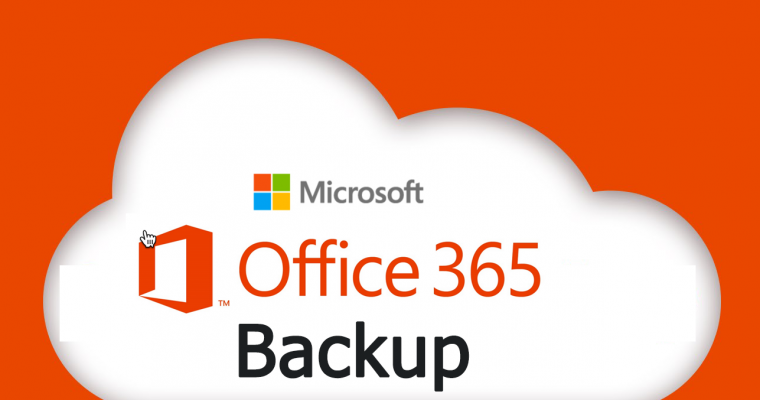Office 365 Cloud Backup: How to Protect Data On The Microsoft Cloud

Just think of a day when you reach your office and you realize that most of the crucial information has been altered or lost. Financial records, sales list, clients’ personal information – these are some common things that are important in a business. Leakage of these things can result is a decrease in the growth of your firm and of course impact market reputation as well. Therefore, it’s now your time to realize that just storing data on the cloud doesn’t mean that it is backed up. This means that you on your own has to create a secure backup of SaaS data and also have the feature to restore backed up content quickly in a data loss event. Today’s Invorx post is going to examine a few core backup policies, which are offered by Microsoft Office 365 email client. This will help in determining Microsoft’s duties towards Office 365 cloud backup and recovery solutions.
An Interesting Fact – Once you will achieve complete knowledge about Office 365 backup and restoration policies, automatically you’ll feel confidence within yourself. This confidence will help you in taking decision for protecting data on the Microsoft cloud and wield the cloud monitoring power without any stress of data breach occurrence.
Learn About Microsoft’s Office 365 Cloud Email Backup and Retention Policies
Everyone might be known with the fact that data loss is a major issue for Office 365 business clients. It is so because Microsoft’s backup standards can’t guarantee a full and rapid restoration solution for the breached data. Even when the nature of data is retrievable, the procedure becomes complicated and too much lengthy. Talking about the retention policies then, they vary from one app to another included in the cloud.
Microsoft online applications like SharePoint and OneDrive hold much of the integration capabilities within O365. But, this integration could lead to jeopardy when an end user mistake, sync issues, hacking, or malicious insiders cause information breach. Both applications provide a primary as well as secondary recycle bin with the default retention period setting of 93 days. Still, if tenant’s owners decide to permanently delete the data from the trash folder before the completion of the retention period, they can do it; but also remember that the information will be unrecoverable. Also, Microsoft introduced a restoration feature in OneDrive that permits clients to roll back their entire documents to an earlier stage within 30 days, but it holds major limitations. Majorly, it enforces no new security layer – if the information has been permanently erased i.e., can’t be regained back. For the records that do exist in OneDrive, it is an “all or none” destructive restore that means a person has to roll back the modifications made in their online tenant to the chosen time.
Exchange Online platform comprises of its own retention standards. By default, the deleted items go into the ‘Deleted Item’ folder. Once the items are removed from ‘Deleted Item’ folder, they are then moved to another secondary folder named as “Recoverable Items’ folder. This folder comprises of 14 days retention period settings, which can be updated up to 30 days. After reading all these statements, you might have got the answer for all hopes and dreams of backup and retention solutions but, before that consider the following things:
- Backup and retention standards are always developing and tend to be complicated. If you are not regularly analyzing your company’s information and dedicating time to analyze the complex arena, it is easy for things like crucial data to leak from a small network gap.
- From service to service, the retention capabilities and policies vary within Office 365. Also, the new services like Microsoft Team do not have the same set of safety measures within it.
- The Office 365 cloud backup and retention can only secure users from data leakage in very limited scenarios. They cannot provide the approaches, which are embedded in third-party backup solutions.
Important Note – Never consider backup and retention policies as a substitute for complete backup and restoration strategy.
The real fact is that the backup and restore policies of Microsoft are not designed in a way that clients have direct right to access backed up data with the power to easily restore it. Although it is true that the Microsoft team does its best in safeguarding information of their clients from data breaches. But the current status says that Microsoft Office 365 does not have the specialization in data backup and recovery. Ultimately, cloud users are responsible for the online activities and protection of data on the Microsoft cloud.
Fully Protect Yourself With Office 365 Cloud Backup
Data breaches, and the stress that surrounds it could be simply ignored by collaborating Office 365 with a full backup and restoration solution. Instead of wasting your precious time in searching here and there for a misplaced document or recreating a mistakenly deleted file, why not to smartly restore the lost data via a simplified software and get back to the actual work in just a few clicks? Instead of using your mind in configuring and managing multiple settings for recoverable items, deleted items, and more for each O365 app, you can simply check that all information of Office 365 tenant is backed up (for good) and is quickly recoverable with an easy-to-use backup product like SysTools Office 365 backup. It will help customers to be safe from the risk of data loss because of unexpected deletions or top reasons of SaaS data loss, comprising of sync error, hacking, human error, and malicious internal actors.
